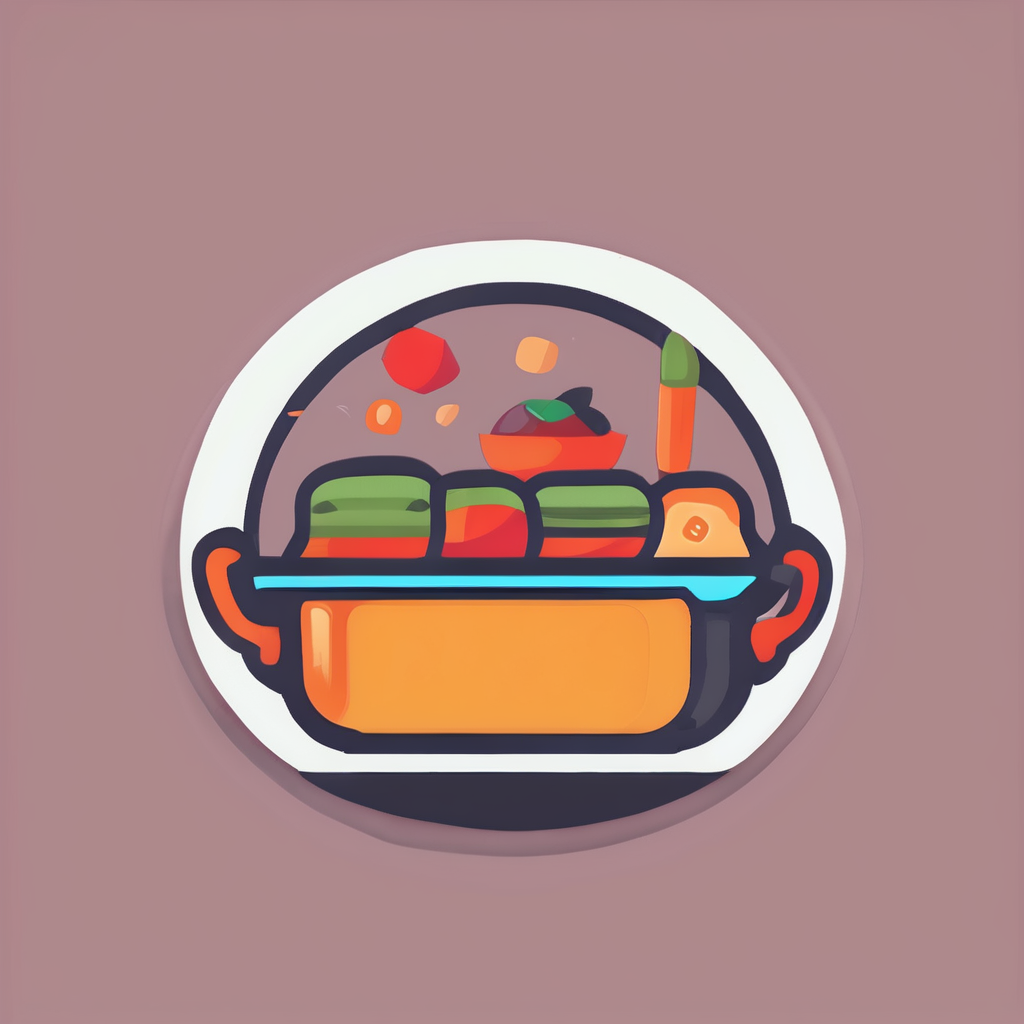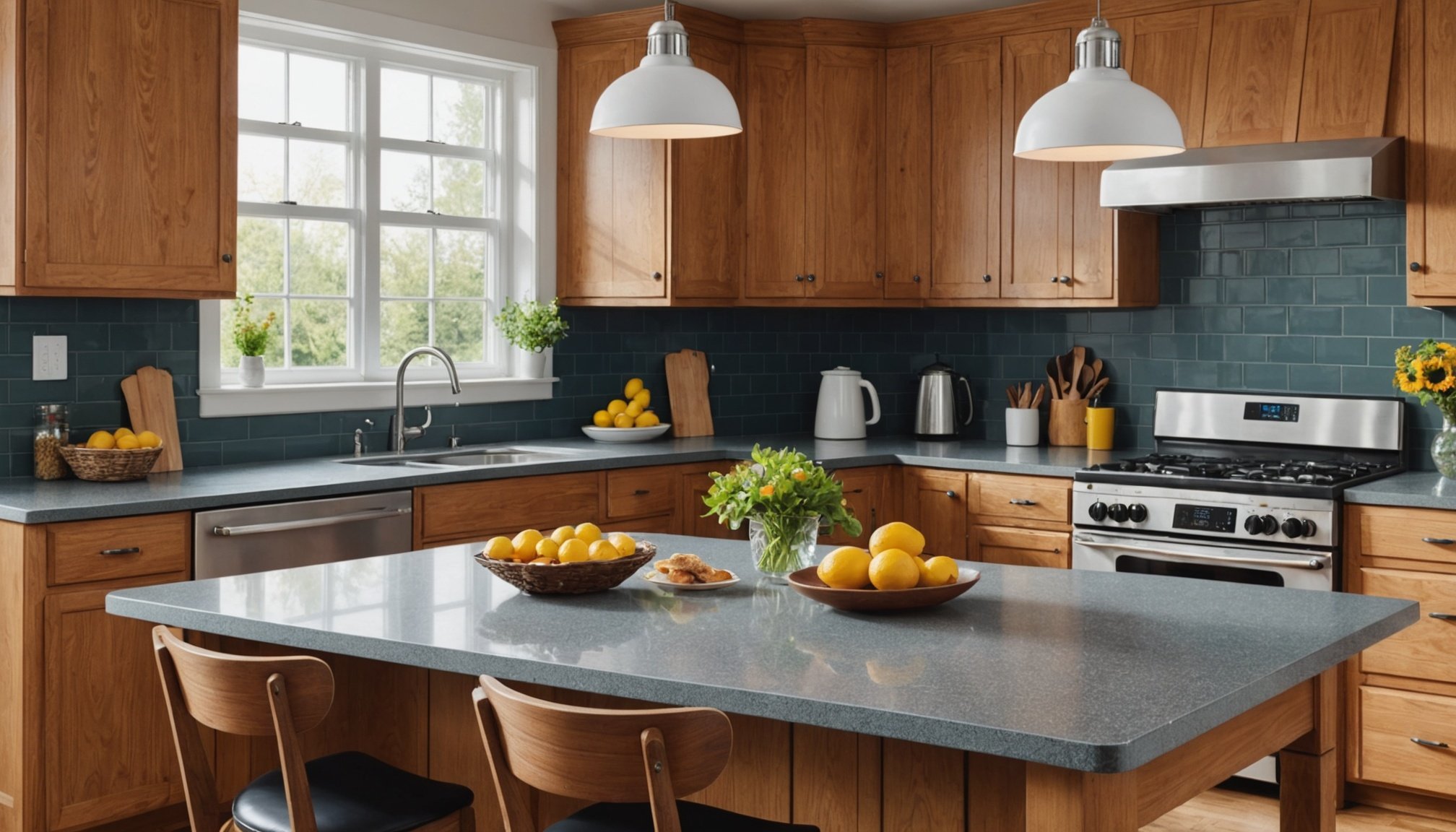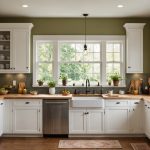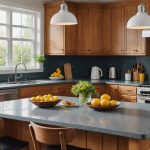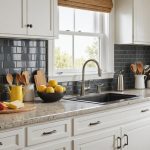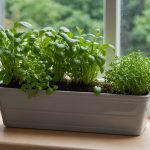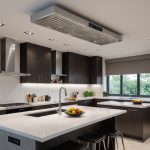Quartz Surfaces
In the realm of kitchen tables, quartz surfaces stand out for their remarkable durability and low-maintenance care. They offer several advantages, making them an ideal choice for high-traffic households seeking both style and resilience. One key attribute of quartz is its inherent resistance to scratching and staining. This makes it particularly suitable for busy kitchens where spills and scrapes are common occurrences.
Quartz kitchen tables boast a non-porous surface, which prevents the absorption of liquids and helps maintain their pristine condition over time. This attribute significantly reduces the need for constant upkeep and maintenance, saving homeowners precious time and effort. Furthermore, quartz surfaces are available in a wide array of colours and patterns, allowing for versatile design choices to match any kitchen decor.
In the same genre : Ultimate guide to choosing a durable heat-resistant soup ladle that resists warping and melting
When it comes to quartz care, simplicity reigns supreme. A daily wipe with a mild soap solution is typically sufficient for regular cleaning, ensuring the surface remains spotless. Avoiding harsh chemicals and abrasive scrubbers will help maintain the lustrous finish of the quartz. Considering these factors, quartz kitchen tables offer an unbeatable combination of durability, aesthetic appeal, and easy maintenance for any high-traffic household.
Overview of Durable Kitchen Table Surfaces
Choosing the right durable kitchen table surfaces is vital for high-traffic households. With numerous resilient options available, selecting the perfect one involves understanding key features such as durability, aesthetics, and maintenance.
This might interest you : Unlock the secrets to top-quality non-stick roasting pans: your ultimate guide for effortless cooking!
High-traffic households benefit greatly from kitchen tables made of resilient materials that can withstand daily wear and tear. Key features to consider when evaluating durability include resistance to scratching, staining, and impact. For instance, surfaces like quartz are non-porous and hence prevent liquid absorption, while laminate is known for its affordability and ease of maintenance.
In this guide, we address various durable surfaces, offering a brief summary of materials suitable for kitchen tables. Among these options, quartz surfaces excel due to their low-maintenance requirements and inherent strength. Laminate kitchen tables, by comparison, provide an economical solution with impressive durability, often requiring less maintenance effort. For those who appreciate natural aesthetics, treated wood surfaces can offer both beauty and toughness when properly cared for.
Ultimately, evaluating the specific requirements of your household will guide you in selecting the most appropriate material. Understanding each surface’s strengths and limitations can lead to a well-informed decision, ensuring your kitchen table stands the test of time while enhancing the home’s aesthetic appeal.
Treated Wood Surfaces
Treated wood tables offer a unique blend of natural beauty and durability, making them a charming choice for those who value aesthetics and sturdiness. Wood surface durability is often emphasized by the treatment processes that protect against moisture damage and wear. Such treatments are key in preserving the wood’s appearance and prolonging its lifespan, even in high-traffic households.
One of the main benefits of treated wood tables is the rich and warm appeal they bring to a kitchen space, adding elegance that other materials might lack. However, compared to alternatives like laminate and quartz, maintaining these surfaces can be more challenging. Wood requires periodic sealing and waxing to ward off scratches and stains, preserving its natural allure and enhancing its longevity.
For effective upkeep, it’s vital to adopt specific wood maintenance tips. This includes using coasters or placemats to protect from spills and heat, and regularly dusting to prevent buildup. These simple habits can help keep the wood in pristine condition, ensuring that it continues to be a centrepiece in the home. Balancing aesthetics with practicality, treated wood surfaces reward their caretakers with timeless beauty and robust durability when properly maintained.
Laminate Surfaces
In the world of busy households, laminate kitchen tables serve as a practical and stylish choice. Their advantages of laminate include not only affordability but also a diverse range of design options that mimic more expensive materials. Laminate surfaces are highly regarded for their resistance to scratches and stains, making them an excellent solution for families with energetic lifestyles.
Comparing laminate to other materials like quartz or treated wood, its durability stands out due to the manufactured layers fused together under high pressure, resulting in a robust and resilient finish. This construction allows laminate to effectively withstand the rigours of daily use without sustaining significant damage, positioning it as an ideal option for high-traffic areas.
For those keen on longevity, laminate maintenance is straightforward and often more convenient than other surface types. Regular cleaning requires nothing more than mild soap and water, avoiding any abrasive cleaners that could deteriorate the surface. Light spills can be swiftly cleaned, maintaining the table’s pristine look. To prevent potential damage, it is prudent to use placemats or coasters to guard against heat and moisture. Such simple maintenance solutions can extend the life of laminate surfaces, ensuring they remain a valuable asset within your home.
Comparison of Surface Materials
Choosing the right kitchen table surface is essential for ensuring both functionality and style in high-traffic households. To make an informed decision, understanding the key differences between available materials is crucial.
A kitchen table surface comparison helps highlight how quartz, laminate, and treated wood differ in terms of durability, care requirements, and aesthetic appeal. Quartz surfaces are renowned for their resistance to scratching and staining, making them an excellent choice for busy kitchens. Laminate tables offer a balance of affordability and durability, with easy maintenance making them ideal for families. Treated wood, while elegant, requires more upkeep to maintain its allure.
This material comparison guide provides insights into lifestyle compatibility. For example, households with young children might prefer laminate for its toughness and ease of cleaning. Quartz suits those prioritising low maintenance, whereas treated wood caters to those valuing aesthetics.
Creating a durable surface chart assists in quickly assessing which material aligns with your needs. Such a visual overview simplifies the decision-making process, ensuring you opt for a table that supports your household demands while enhancing your home’s style.
Product Recommendations
Selecting the right kitchen table is crucial for high-traffic households, where durability and style must meet practicality. Choosing durable kitchen furniture involves understanding what key features will ensure longevity and satisfaction. Here, we’ve curated a list of the best kitchen table products that marry resilience with aesthetics.
-
Quartz and Laminate Options: These tables are celebrated for their resistance to stains and scratches, suitable for busy environments. Quartz stands out with its polished look and minimal maintenance needs, while laminate offers a budget-friendly yet robust alternative.
-
Treated Wood Selections: Ideal for those who value natural beauty, these tables offer uniqueness and charm. With proper care and maintenance, they become a centerpiece of elegance.
Insights from product reviews highlight user experiences and the advantages of each table type. Experts recommend evaluating household dynamics—such as the presence of young children or frequent guests—to align with the right choice.
When on the hunt for a kitchen table, consider factors like size, material, and design to bolster your selection process. With the right approach, your new table will seamlessly blend into your home, enhancing both functionality and visual appeal.
Practical Advice for Selection
Choosing the best kitchen table surfaces involves evaluating your specific needs using a detailed buyer’s guide. Begin by assessing your household’s dynamics. For high-traffic households, where durability is essential, consider both material longevity and maintenance ease. Evaluate if quartz kitchen tables with their low-maintenance allure or economical laminate options suit your lifestyle. Treated wood tables might appeal to those valuing natural aesthetics despite their more demanding upkeep.
Taking lifestyle into account is crucial. Families with young children benefit from the scratch-resistant properties of laminate and quartz. Meanwhile, households that emphasise traditional beauty might prefer the warmth of wood, provided they’re ready for the maintenance commitment.
Kitchen table tips focus on functionality as well as style. Consider table size and shape; round tables often optimise space, whereas rectangular ones can cater to larger families. Determine your table’s primary use – is it for dining, homework, or crafts? This will influence the durability you require.
Look for durable kitchen table options in reputable furniture stores or online platforms. Ensure they provide detailed materials information and customer reviews. With these practical insights, selecting a durable and stylish kitchen table becomes an informed and satisfying decision.
Visuals and Resources
In the quest to choose durable kitchen table surfaces, the role of kitchen table visuals cannot be overstated. A picture is more than worth a thousand words when assessing surface durability and other essential features. Visual aids, such as comparison tables and material images, serve as quick references that simplify complex information, making the decision process more accessible.
When pondering over which surface best suits your lifestyle needs, incorporating these visuals provides a clearer perspective. Comparison tables highlight key features of options like quartz, laminate, and treated wood at a glance. Such tables elucidate aspects like ease of maintenance, aesthetic potential, and overall resilience. Seeing these features visually compared demystifies the choices available, leading to an informed decision.
To enhance your understanding further, access a variety of material images. High-resolution images help differentiate the tactile appeal of each surface, be it the sleek shine of quartz, the varied textures of laminate, or the warmth of treated wood. Access these rich visual resources via reputable online platforms and guides, ensuring you have the most comprehensive insights before settling on the finest surface for your kitchen table.
